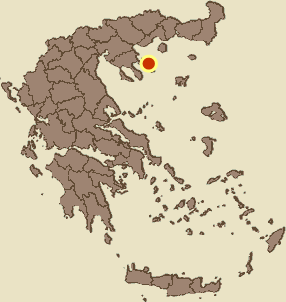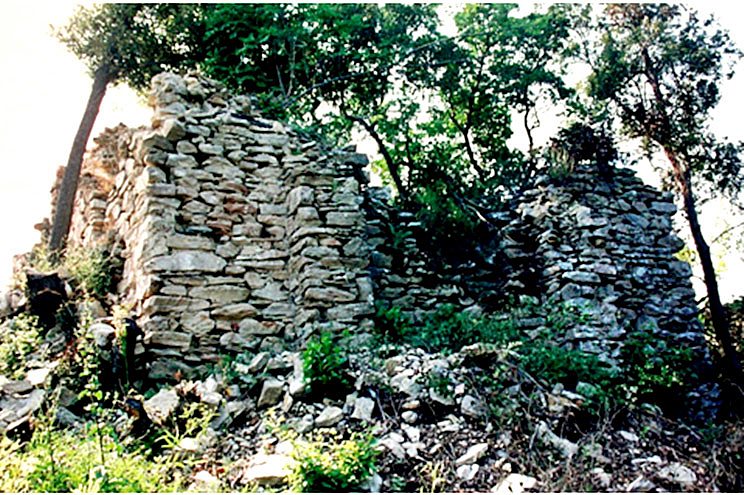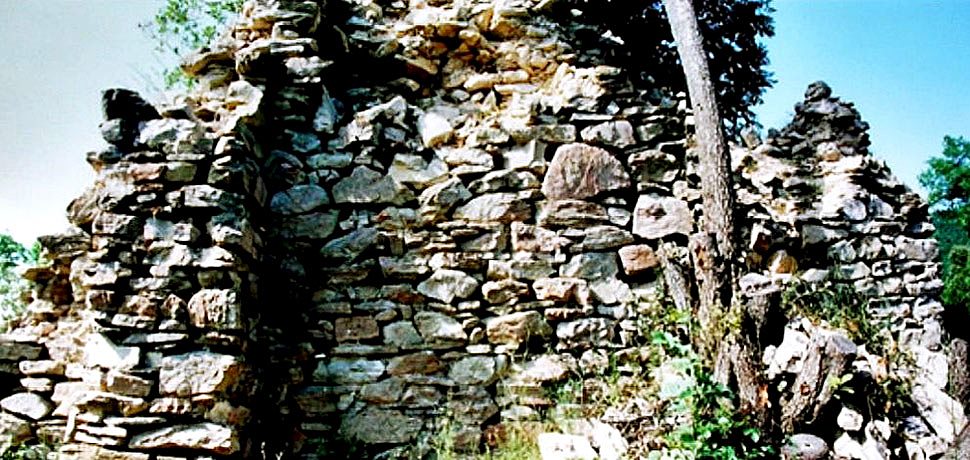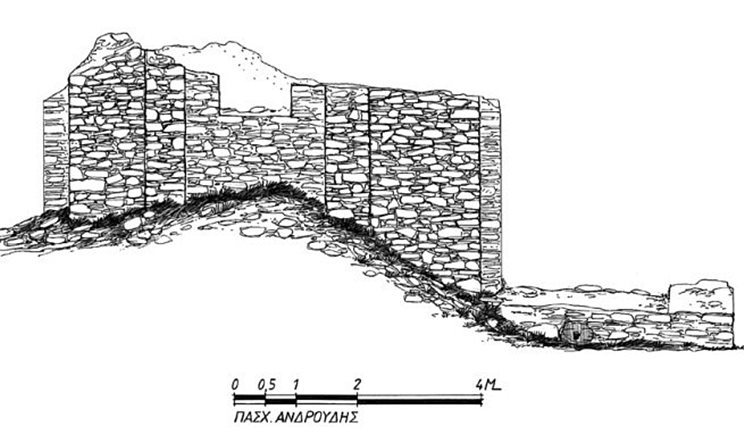Hilandar Monastery, Athos
Albanian tower
| Location: |
| In the forest 1km SE of Hilandar monastery in mount Athos, above the deserted skete of Agia Triada. |
| Region > Prefecture: |  |
| Athos Mount Athos | |
| Municipality > Town: | |
• Hilandar Monastery | |
| Altitude: | |
|
Elevation ≈ 220 m (Relative Height≈0 m) |
| Time of Construction | Origin | |
| around 12th cent. | BYZANTINE |
|
| Castle Type | Condition | |
| Tower |
In Ruins
|
A ruined tower in the forest 1km south of the Hilandar monastery in mount Athos, above the deserted Skete of Holy Trinity. The location is near the dirt road from the monastery to its western arsanas (Giovanitsa).
The info presented in this page, and the pictures, are based on articles by Dr. Paschalis Androudis.
History
In the 15th century the tower belonged to Ioannis (Ivanis) Kastriotis, ruler of Northern Albania and father of Georgios Kastriotis, the national hero of Albania (better known as "Skenderbeg").
According to a document of 1421-1422, Ioannis Kastriotis bought the tower and 4 adelfata (for himself and for three of his sons) from the monastery of Hilandar for the amount of 60 Venetian florins.
“Adelfaton” was the right to reside in a dependency of a monastery on Mount Athos, accompanied by the right to exploit the crops of the surrounding land. The right was valid for life, but could not be inherited. It was a common practice at one time, especially in the 14th and 15th centuries, when various wealthy secular lords from the Balkans acquired this type of properties in Athos in order to retire and remain there as monks at the end of their lives.
However, the tower pre-existed long before Kastriotis bought it. The exact chronology is not known. Initially it must have been a purely defensive tower, which probably served as a refuge for monks in cases of pirate raids. It was most likely built in the same period with the tower of Agios Savas of the Monastery of Hilandar (with which there are structural similarities), so we assume that it is a construction of the 12th century, approximately. When Kastriotis bought it, he had to make a radical renovation, and maybe, then, other buildings were added to the surrounding area.
The tower was returned to the monastery at the end of the 15th century, probably in 1468, after the death of all the beneficiaries of the adelfaton. In the following period, a community of monks settled there - apparently organized according to the standards of a Skete - which managed to receive for several decades, at least until 1528, rich donations from the rulers of Wallachia.
In the various monastic documents of that time, related to these donations, it seems that the name “Tower of the Albanian” (arbanaskij pirg) was already established, while sometimes the name “Tower of St. George” was also used.
The tower was used for centuries afterwards. It was probably abandoned around the beginning of 20th century or a while before.
Structure, Fortification & Buildings
It is a relatively small tower, almost square, with two shallow protruding butresses on the outside, on each side. The batresses protrude by only 35cm from the walls.
It is believed that the towers with buttresses were purely Byzantine style. Especially the shallow buttresses were characteristic of some towers of the 11th-12th century on Mount Athos, such as the towers of the ruined Katzaris Monastery, the Metamorphosis of Vatopedi (first phase), of Agios Savvas in Hilandar.
This tower is preserved at a maximum height of 6m. Initially it must have been at least 3 storeys high. The dimensions of its base are 6.40✖6.70m. The thickness of its walls is 1.50m. The entrance opening is elevated on the east side. The entrance had to be made through a mobile wooden staircase.
On the north side of the tower is built a small vaulted cistern that survives. Its internal dimensions were 2.3✖4.0m.
In the surrounding area, in the vegetation, there are ruins of other buildings, remnants of the old Skete.
| First entry in Kastrologos: | October 2020 |
Sources
- Pascal Androudis, Three early shallow-butressed towers of the monastery of Chilandar, on Mount Athos, Nis and Byzantium X (2012), p.291-304
- Pascal Androudis, Ιστορικές και αρχαιολογικές μαρτυρίες για τον «Πύργο του Αλβανού» στο Άγιον Όρος, Βυζαντιακά 22 (2002), p.219-245
|
|
| Access |
|---|
| Entrance: |
| Free access |










